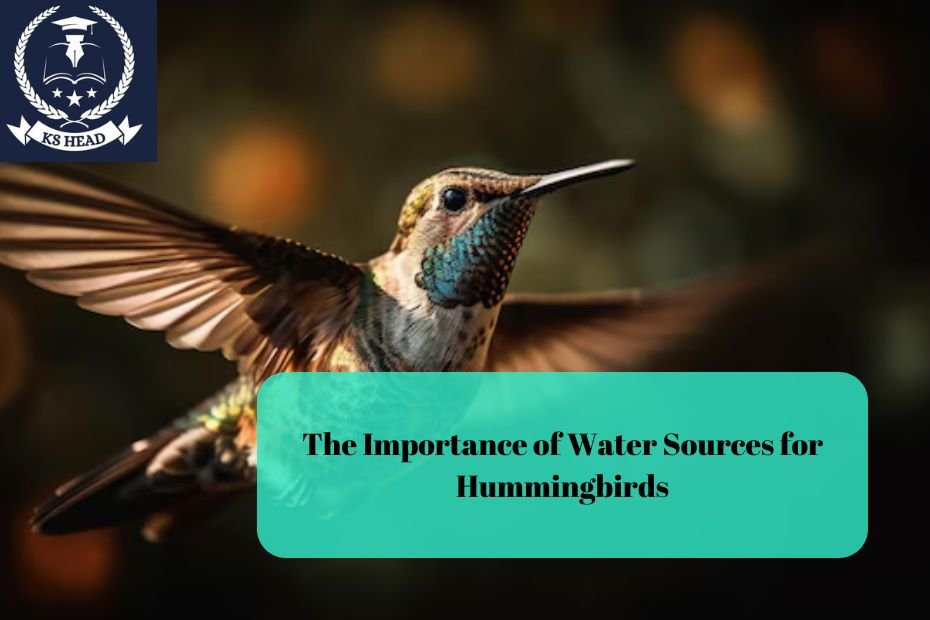Hummingbirds, known for their vibrant colors and incredible flying abilities, are one of nature’s most fascinating creatures. These tiny birds are not only a delight to observe but also play a crucial role in our ecosystem as pollinators. While many people associate hummingbirds primarily with nectar, the availability of clean water sources is equally vital to their survival. This article explores the importance of water sources for hummingbirds, detailing their needs, the impact of environmental changes, and how we can help ensure their survival.
Understanding Hummingbirds
Before delving into the significance of water sources, it’s essential to understand the biology and behavior of hummingbirds.
Physical Characteristics
Hummingbirds are the smallest birds in the world, with some species weighing as little as 2.0 grams. They possess unique adaptations, including:
- High Metabolism: To sustain their rapid wing beats (up to 80 times per second), hummingbirds have an incredibly fast metabolism, requiring a diet rich in sugars and fluids.
- Specialized Feathers: Their feathers are iridescent, reflecting light and creating vibrant colors that vary depending on the angle of observation.
- Rapid Wing Movement: Their ability to hover in place and fly backward is facilitated by their unique wing structure, allowing them to access nectar from flowers efficiently.
Feeding Habits
Hummingbirds primarily feed on nectar from flowers, which provides the essential sugars for their energy needs. However, they also require water for hydration and other essential functions.
The Role of Water Sources
Hydration Needs
Like all living creatures, hummingbirds need water to survive. They consume water through:
- Direct Drinking: Hummingbirds drink water directly from sources such as bird baths, puddles, or dew on leaves.
- Food Sources: They also obtain moisture from the nectar they consume, as well as from insects and spiders that provide protein.
Water plays a critical role in their survival by:
- Maintaining Body Temperature: Water helps regulate body temperature, especially during hot weather or intense activity.
- Supporting Digestion: It is essential for the digestion of food, particularly in metabolizing sugars from nectar.
- Facilitating Flight: Dehydration can lead to fatigue and hinder their ability to fly, affecting their foraging and territorial behaviors.
Breeding and Nesting
Water sources also influence breeding and nesting behaviors in hummingbirds:
- Nesting Material: Hummingbirds often use mosses, leaves, and spider silk to construct their nests. Access to water supports the growth of these materials, ensuring they have suitable nesting sites.
- Egg Incubation: Water availability can impact the survival rate of fledglings, as adult birds require sufficient hydration to produce milk-like fluid for feeding their young.
Environmental Factors Impacting Water Sources
Climate Change
Climate change poses a significant threat to water availability. Rising temperatures and altered precipitation patterns can lead to:
- Drought Conditions: Extended periods of drought can reduce the availability of natural water sources, making it harder for hummingbirds to find sufficient hydration.
- Changes in Flowering Patterns: Climate change can alter the timing of flowering plants, which may affect nectar availability and, consequently, water access.
Habitat Loss
Urbanization and deforestation lead to habitat loss, which can have severe implications for water sources:
- Reduction of Natural Wetlands: Wetlands are vital ecosystems that provide essential water sources for various wildlife, including hummingbirds. Their destruction can lead to decreased water availability.
- Increased Pollution: Industrialization and agricultural runoff can contaminate water sources, making them unsafe for hummingbirds and other wildlife.
Water Quality
The quality of available water is critical for hummingbirds:
- Pollution: Contaminated water sources can harm hummingbirds, leading to health problems and reduced reproductive success.
- Clean Water Access: Fresh, clean water is essential for the well-being of hummingbirds, impacting their feeding and breeding success.
Creating Hummingbird-Friendly Water Sources
To support the survival of hummingbirds, creating accessible water sources in your garden or local environment is crucial. Here are some effective ways to do so:
Bird Baths
A bird bath can be a simple yet effective way to provide water for hummingbirds:
- Shallow Design: Ensure the bird bath is shallow, with a depth of no more than 2 inches. Hummingbirds prefer to sip and splash rather than dive in.
- Add Pebbles or Rocks: Placing pebbles in the bath allows hummingbirds to perch while they drink, making it easier for them to access water.
Water Features
Creating small water features in your garden can attract hummingbirds:
- Fountains: Small fountains can create moving water, which hummingbirds are often drawn to. The sound of flowing water can also attract them.
- Misters: Installing a misting system or a small spray nozzle can simulate natural water sources and provide additional moisture in the air.
Regular Maintenance
Regular maintenance of water sources is vital:
- Cleaning: Clean bird baths and water features regularly to prevent algae growth and bacteria accumulation.
- Refilling: Ensure that water sources are always filled, especially during hot summer months when water is in high demand.
Native Plants and Water Sources
In addition to providing direct water sources, planting native flora can enhance the overall ecosystem and support hummingbirds:
Native Flowering Plants
- Attract Pollinators: Native flowering plants attract hummingbirds by providing nectar-rich flowers.
- Natural Water Sources: Many native plants have evolved to thrive in local ecosystems and can help retain moisture in the soil, creating a natural habitat for hummingbirds.
Additional Considerations
- Avoid Pesticides: Using pesticides can harm not only hummingbirds but also the insects they feed on. Opt for organic gardening methods to create a safe environment.
- Diversity of Plants: A diverse garden with a variety of blooming plants ensures a continuous supply of nectar and can contribute to a healthier habitat for hummingbirds.
The Impact of Hummingbirds on Ecosystems
Hummingbirds are vital to many ecosystems due to their role as pollinators:
Pollination
- Flowering Plants: Hummingbirds are crucial for the pollination of various flowering plants. As they feed on nectar, they inadvertently transfer pollen from one flower to another, facilitating plant reproduction.
- Biodiversity: By supporting the growth of flowering plants, hummingbirds contribute to the biodiversity of their habitats, which benefits other wildlife and maintains healthy ecosystems.
Food Chain
Hummingbirds are also an important part of the food chain:
- Predators and Prey: While they primarily feed on nectar, hummingbirds also consume insects, providing essential nutrients and energy. In turn, they serve as prey for larger birds and mammals, playing a vital role in the food web.
Conclusion
Water sources are critical for the survival of hummingbirds. They rely on clean, accessible water not only for hydration but also for breeding and nesting. As environmental changes threaten their natural habitats, it is essential for individuals and communities to create and maintain water sources for these beautiful birds. By understanding their needs and taking action to support their well-being, we can ensure that hummingbirds continue to thrive in our ecosystems.
FAQs
1. How much water do hummingbirds need daily?
Hummingbirds require a constant supply of water, especially in hot weather. They may drink multiple times a day, depending on their activity level and environmental conditions.
2. Can hummingbirds drink from a regular bird bath?
Yes, hummingbirds can drink from a bird bath, but it’s essential that the bath is shallow and clean to prevent drowning.
3. What plants attract hummingbirds to my garden?
Plants like bee balm, salvia, and trumpet vine are known to attract hummingbirds due to their nectar-rich flowers.
4. How can I help hummingbirds during drought conditions?
You can help by providing a consistent water source, such as a bird bath or fountain, and planting drought-resistant native flowers that provide nectar.
5. Are there any harmful chemicals I should avoid near hummingbird feeders or water sources?
Yes, avoid using pesticides, herbicides, or any chemicals that could contaminate water sources or harm hummingbirds and their food sources. Opt for organic gardening practices instead.

